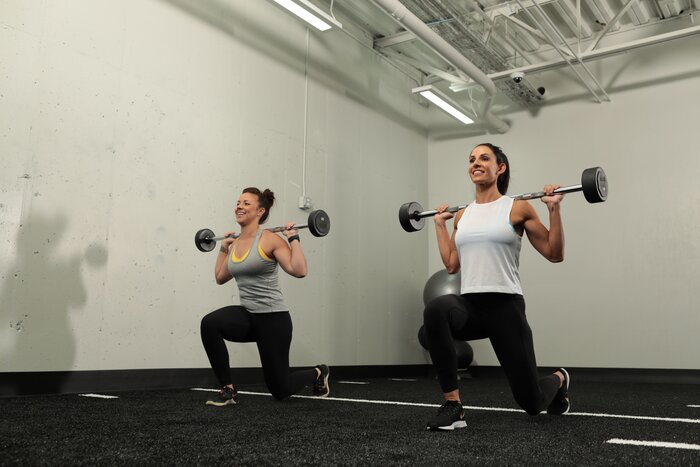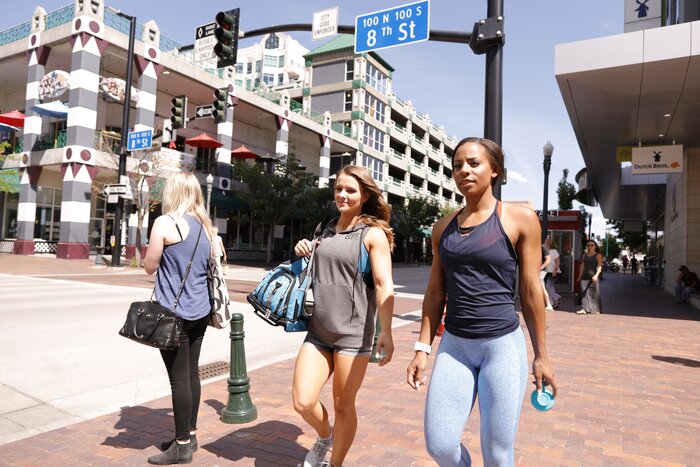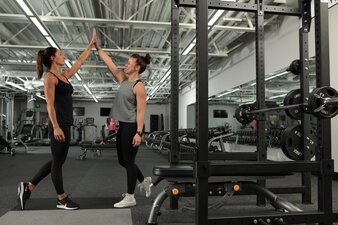Women have often been misguided or more likely not properly educated on the phases of our menstrual cycle and how they impact training and fueling. Whether you’re an elite athlete or simply a health and wellness enthusiast, it’s important to understand the stages that we go through each month and how they impact performance.
Our period does more than just make us feel like our less enthused selves for three to seven days. It actually can take away the gains we’ve made in training if we do not fuel properly in the time outside of when we are actually menstruating. Let’s break down exactly why that is and how to optimize training around our cycle.
First, one thing to clarify: the average length of a cycle can be up to 35 days, instead of the cookie-cutter 28 that we all are told or learned at some point. If you track your cycle, you might be aware of this already and panic like I did when I was sitting around 34-36 days.
Act I: Follicular Phase & Menses
This is when we know our period begins. The lining of the uterus sheds for the next 3-5 days and the follicle begins to develop. Both progesterone and estrogen - two hormones we’re going to get very familiar with as we move along here - are at their lowest, resulting in an astronomical physiological capacity.
It’s in this phase where I’d recommend getting after strength and power, even 1RM or 3RM testing, because once progesterone and estrogen bump up later on that physiological capacity diminishes.

Act II: Follicular Phase & Pre-Ovulation
In the next seven to nine days following your period, follicle-stimulating hormone is now hard at work to turn that follicle into an egg. Estrogen is on the rise, causing an increased anabolic effect. This effect repairs the uterine lining and effectively gets the oven ready in case the egg becomes fertilized. But, yes, I did say anabolic. That’s right - the lady hormone can help us put on muscle mass. That said, bumping your volume up a bit in this phase could yield an excellent hypertrophic response.
Testosterone also increases for a few days before ovulation. Studies have shown that there could be as much as a 10% increase in potential 1RM if you test within this window.
Finally, and perhaps one of the most important things that happens in regard to training during this phase is that tendon laxity has been shown to decrease significantly. You might be familiar with the concern around ACL tears and women who are on their period…that concern is a bit misguided. This phase, immediately after your period is when you are at the highest potential risk of soft tissue injury when strictly talking about female sex hormones.
Quick Intermission: Ovulation
Here we are, the big day: the fully matured egg is released during ovulation by luteinizing hormone (LH).
Act III: Luteal Phase
Our friend LH begins our journey into the luteal phase, where estrogen drops off and progesterone is on the rise. Unlike just a few days ago, we are now catapulted into a catabolic state. Not only can we feel overall fatigue and lower motivation (lack of serotonin), but the gains we made in Acts I-II can be diminished if we are not fueling properly with adequate protein.

In the luteal phase, strategic off-days and light training can help you avoid completely burying yourself as progesterone has diminished power and strength output for us the next several days. Remember to hydrate, too: increased internal body temp during the entire luteal phase has been well-documented.
Encore!
You know what's next: back to the beginning. I've often said that if there's one thing women generally have a handle on, it's knowing what to expect to feel throughout our cycle. However, what to do and how to train during our cycle? That's not exactly something that's taught in health education at any stage of our life.
It’s important to note, if you’re on an oral contraceptive or other chemical birth control method, please do some research, talk to your OBGYN, and learn how the synthetic hormones they contain affect your cycle. The cadence I’ve described follows that of a “normal” cycle.
With that, even if you are not on chemical birth control, keep track of your emotional and physical symptoms throughout to become an expert on exactly where you feel your best. That way, you can be one huge step closer to maximizing your gains, training intelligently, and owning your physical and emotional well-being. Period.
Learn More About Your Period, Fertility, Effects of Birth Control, and More:
Clue: https://helloclue.com/articles
Sam Moore, Ph.D. (c): https://www.mooresportscience.com/podcasts
(I’ve learned almost everything I know from her, she’s incredible)
Citation
Balachandar, V., et al. “Effects of the Menstrual Cycle on Lower-Limb Biomechanics, Neuromuscular Control, and Anterior Cruciate Ligament Injury Risk: A Systematic Review.” Muscle Ligaments and Tendons Journal, vol. 07, no. 01, 2019, p. 136., https://doi.org/10.32098/mltj.01.2017.17.
Hausswirth, Christophe, and Yann Le Meur. “Physiological and Nutritional Aspects of Post-Exercise Recovery.” Sports Medicine, vol. 41, no. 10, 2011, pp. 861–882., https://doi.org/10.2165/11593180-000000000-00000.
Janse de Jonge, Xanne A. “Effects of the Menstrual Cycle on Exercise Performance.” Sports Medicine, vol. 33, no. 11, 2003, pp. 833–851., https://doi.org/10.2165/00007256-200333110-00004.
Najmabadi, Shahpar, et al. “Menstrual Bleeding, Cycle Length, and Follicular and Luteal Phase Lengths in Women without Known Subfertility: A Pooled Analysis of Three Cohorts.” Paediatric and Perinatal Epidemiology, vol. 34, no. 3, 2020, pp. 318–327., https://doi.org/10.1111/ppe.12644.
The Normal Menstrual Cycle and the Control of Ovulation - NCBI Bookshelf. https://www.ncbi.nlm.nih.gov/books/NBK279054/.
Wikström-Frisén, Lisbeth, et al. “Increasing Training Load without Risking the Female Athlete Triad: Menstrual Cycle Based Periodized Training May Be an Answer?” The Journal of Sports Medicine and Physical Fitness, vol. 57, no. 11, 2017, https://doi.org/10.23736/s0022-4707.16.06444-6.




No comments:
Post a Comment